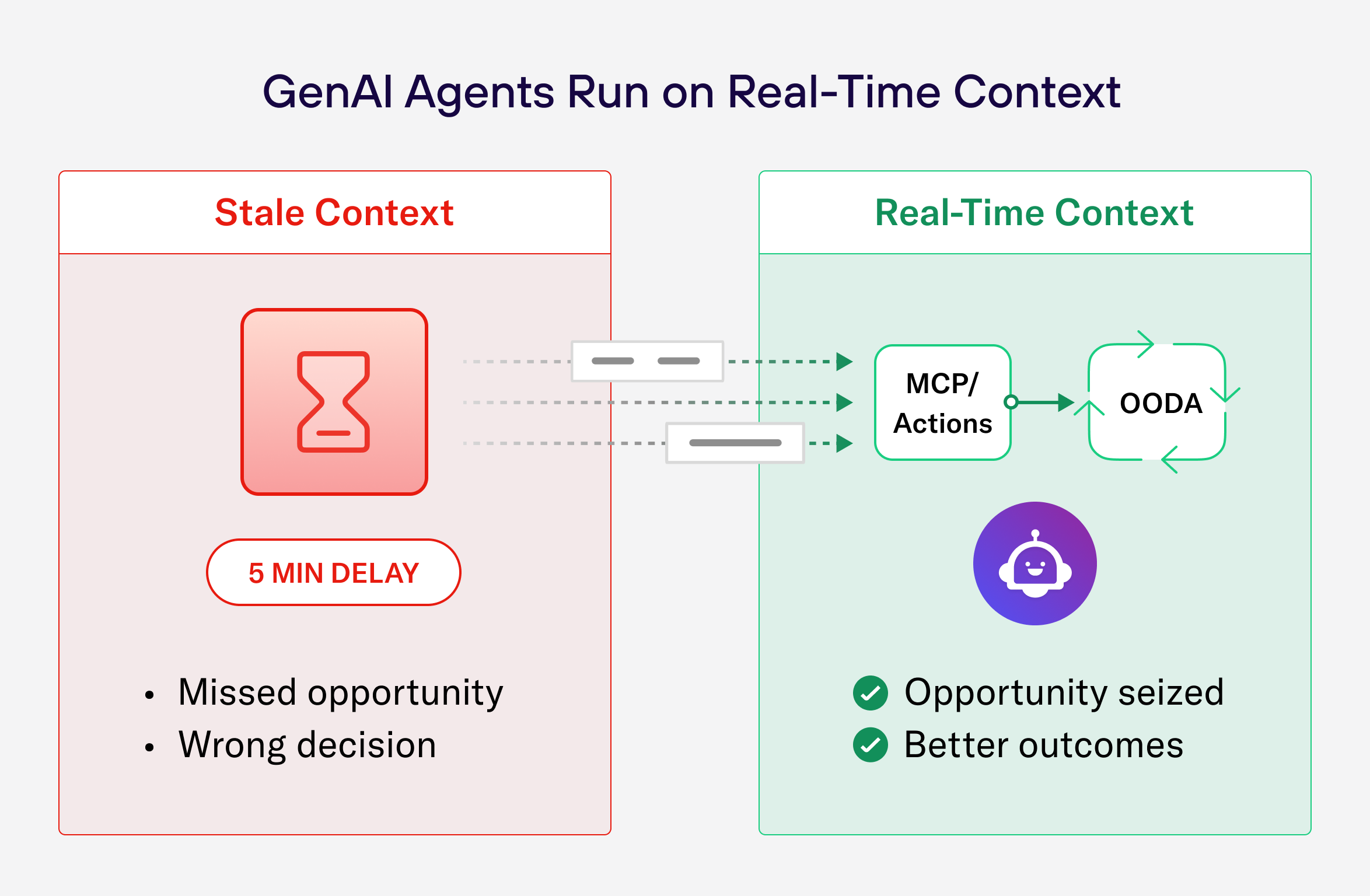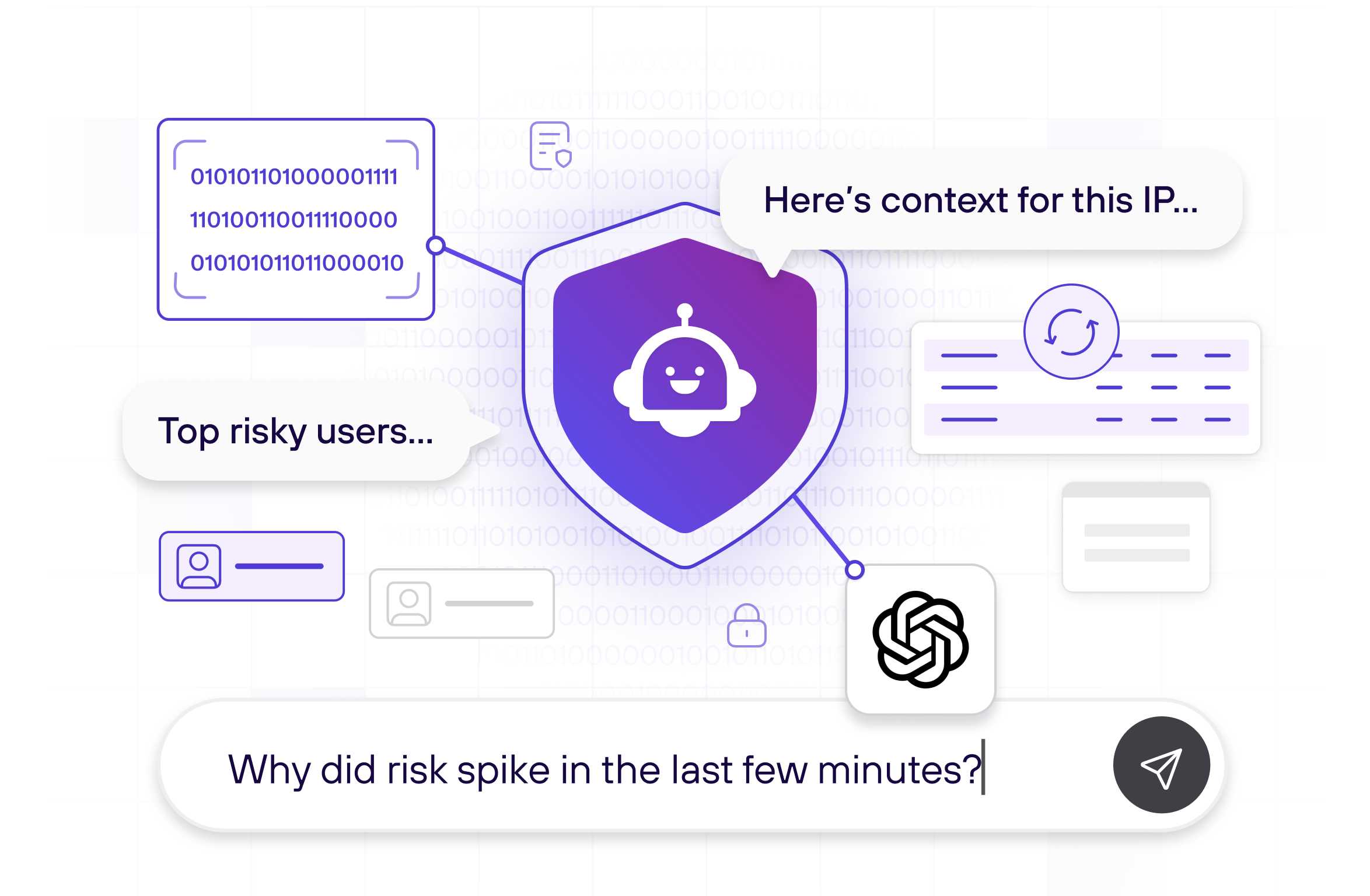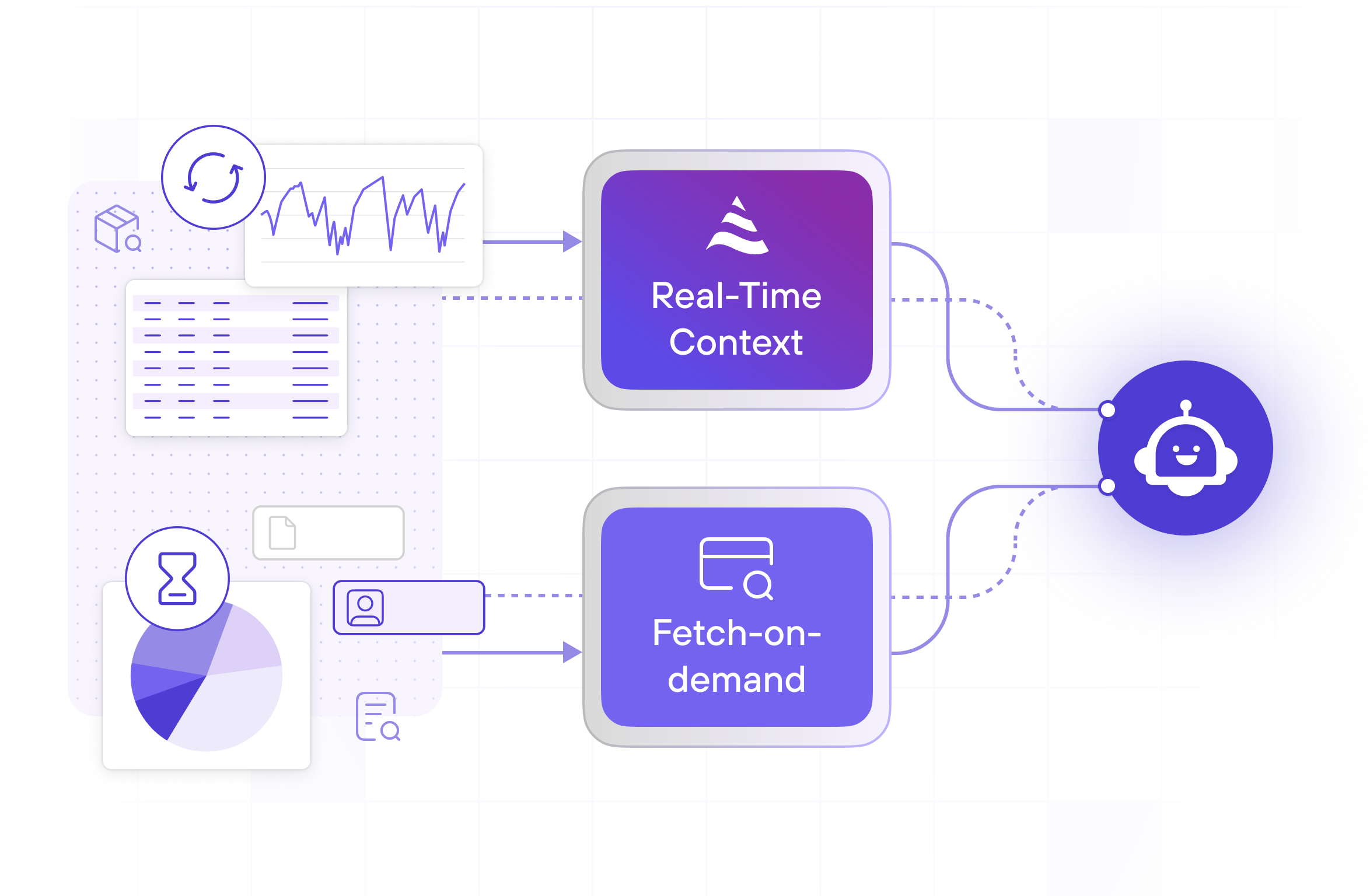13 Oct 2025
Min Read
The Golden Seconds: Why Real-Time Context is GenAI’s Secret Weapon
Generative AI agents are poised to revolutionize how businesses operate. We envision autonomous agents handling everything from customer service to complex logistics, making intelligent decisions on our behalf. But an agent’s intelligence is only as good as its perception of the world. And in a world that changes in milliseconds, what happens when an agent is acting on old news?
This is the "context gap"—the dangerous delay between a real-world event and an agent's awareness of it. When an agent's context is stale, even by a few minutes, its decisions degrade from brilliant to blundering. For many mission-critical use cases, there are golden seconds—a brief window of opportunity where acting on fresh, real-time information can create a magical outcome, while acting on stale data results in total failure.

Anatomy of Failure: An Agent with Stale Context
Let’s consider a familiar scenario: your flight is canceled. An airline deploys a new GenAI agent to manage disruptions for its most valuable customers.
The Goal: Proactively rebook premium passengers onto the best alternative flight before they even know there's a problem.
The Stale Reality: A flight is canceled at 2:00 PM. This event is published to an internal system. A batch process runs every five minutes to sync this operational data with the main customer database.
At 2:05 PM, the agent is triggered. It queries the customer database and sees the customer’s flight is canceled. It also queries the booking system API and sees two available aisle seats on a flight departing in one hour. The agent composes a helpful message and attempts to book the seat.
Result: Failure. In the five minutes it took for the data to sync, hundreds of other passengers and agents had already scrambled for those seats. They’re long gone. The best the agent can do now is book the customer on a flight four hours later. The proactive "concierge" has become a purveyor of bad news, frustrating a high-value customer and adding load to the human call center. The agent, for all its intelligence, failed. It was acting on a memory of the world, not the reality.
The Power of Now: An Agent with Real-Time Context
Now, let's rewind to 2:00 PM and run the scenario again, but this time with a real-time context engine.
Instead of waiting for a batch job, operational events (like flight cancellations) and booking changes are processed as they happen. A real-time engine continuously joins this stream of events with customer loyalty data, creating a live, materialized view of "at-risk premium passengers."
This live view is served via a simple, low-latency API endpoint, forming a Model Context Protocol. The moment a premium passenger's flight is canceled, the agent is triggered. Its first action is not to query a stale database, but to make a direct API call to this real-time context endpoint.
Result: Success. At 2:00:01 PM, the agent has perfect context: the flight is canceled, the customer's status is "Platinum," and their connecting flight is now at risk. By 2:00:03 PM, it has already queried the live booking system, secured one of the last remaining aisle seats on the next best flight, and by 2:00:05 PM, the customer receives a text:
"Hi Jane, an issue with your flight UA456 just came up. No worries—we've already moved you to flight UA550, departing from Gate B12 at 3:00 PM. Your new boarding pass is in the app."
This is the "golden seconds" in action. The agent didn't just solve a problem; it transformed a moment of high stress into a seamless, loyalty-building experience. It succeeded because it was grounded in the present.
Making Real-Time Context Accessible to Everyone
A common objection is, "My database is fast. Isn't that real-time?" This confuses query speed with data freshness. A fast query on five-minute-old data is still a query on stale data. The real challenge isn't just speed; it's bridging the context gap created by the slow ETL and batch pipelines that feed most databases.
True real-time context requires a different architecture—one built around continuous stream processing. Traditionally, building this infrastructure has been the exclusive domain of senior data engineers, requiring deep expertise in complex systems like Kafka, Flink, and Spark Streaming. This complexity has been a major barrier to building truly effective AI agents.
This is where the landscape is changing. With tools like OpenAI's new Agent Builder, creating the agent's "brain" is becoming radically simpler. But that brain still needs fresh data to reason about the world. This is why a new category of tooling is emerging: the real-time context engine for AI.
Platforms like DeltaStream are designed to democratize the "data" side of the equation. They provide a service that allows any developer—not just a streaming data expert—to use simple SQL to ingest, transform, and join live data streams. The result is a simple API endpoint or MCP Server serving a continuously updated, real-time view of the world. This endpoint can be plugged directly into an OpenAI agent as a custom "Model Context Protocol(MCP) Server," effectively giving it live senses.
For GenAI agents to fulfill their promise, they must operate in the world as it is, not as it was. The difference is measured in seconds, but the impact is monumental. By pairing intuitive creation platforms like Agent Builder with accessible real-time data engines like DeltaStream, we are finally empowering developers everywhere to build the next generation of intelligent, context-aware automation.
This blog was written by the author with assistance from AI to help with outlining, drafting, or editing.



